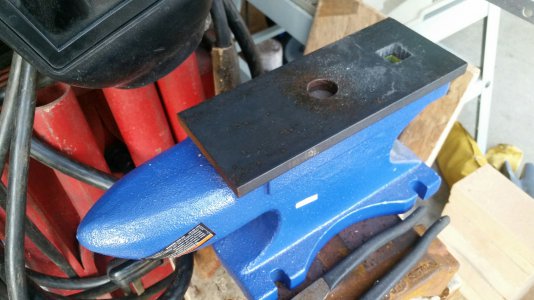I got this cheap ass HF anvil that I want to add a 1/2" steel plate to. You can see I drilled out and filed the 7/8" hardie hole to match the anvil. So 3 questions.
would the 1/2" be thick enough?
should I use nickle rod? (I've got a heavy duty WWII era Marquette stick welder). Reason nickle is b/c the anvil is die cast
or, could I just use my oxyacy torch and braze it?
If I use the nickle rod, I'm thinking I will need to preheat the entire anvil and plate to around 600F before welding to prvent stress and cracking
If I use the torch, I'm thinking I don't need to preheat.
The thing is, the anvil will be hosting some hot metal and I wonder if the braze might come undone?
(the round hole in the photo will be filled in)
Thanks

would the 1/2" be thick enough?
should I use nickle rod? (I've got a heavy duty WWII era Marquette stick welder). Reason nickle is b/c the anvil is die cast
or, could I just use my oxyacy torch and braze it?
If I use the nickle rod, I'm thinking I will need to preheat the entire anvil and plate to around 600F before welding to prvent stress and cracking
If I use the torch, I'm thinking I don't need to preheat.
The thing is, the anvil will be hosting some hot metal and I wonder if the braze might come undone?
(the round hole in the photo will be filled in)
Thanks

